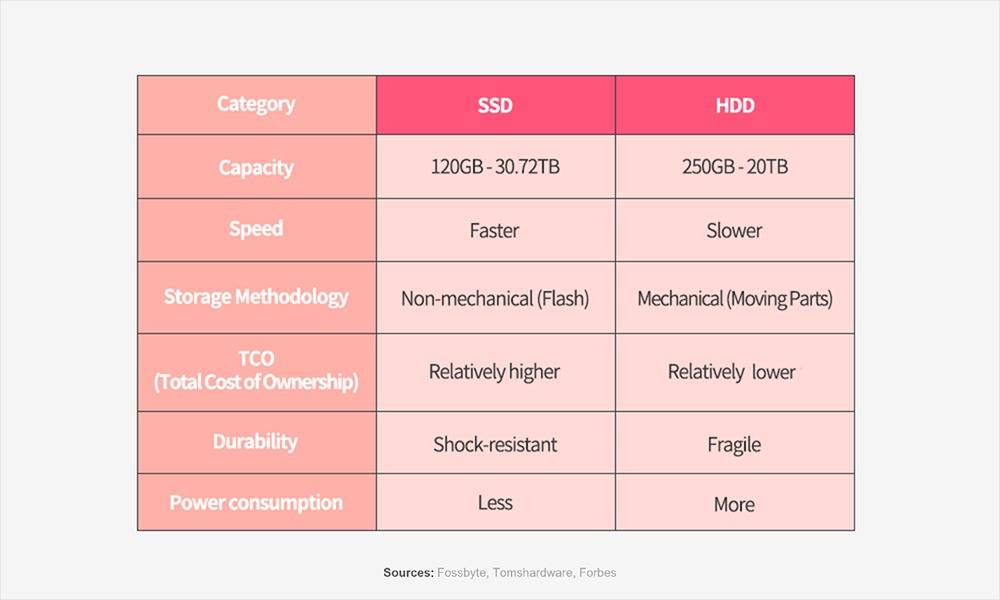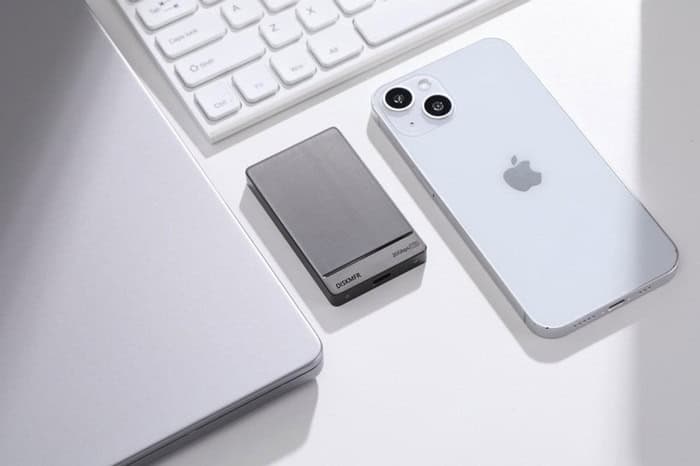HDDs still have a place in modern storage.
For most users, HDDs are now almost obsolete. Whether in laptops or desktops, SSDs have more or less replaced mechanical hard drives, becoming the sole real storage choice for the average user. Considerations regarding performance, reliability, durability, noise, size, and even cost are not in favor of HDDs.
However, even in 2024, there are still reasons to consider using HDDs in your system. For users who prioritize large capacity and cold storage over performance, they remain a better choice.
01
Cost Advantage of HDDs

While most users buying 1TB or even 2TB SSDs won’t save much compared to choosing the same capacity of HDD, larger HDDs can still beat SSDs on price. The storage needs of a gaming or work PC differ greatly from those of NAS, home servers, and professional setups.
The best SSD for gaming might be a 1TB Gen4 NVMe SSD, but for those needing 4TB, 6TB, or larger drives, traditional hard drives are still preferable from a cost perspective. For instance, a 4TB Seagate BarraCuda HDD is priced at just $85, while a 4TB Samsung 870 QV costs about $300, and it happens to be just a SATA SSD.
In storage-intensive setups, value matters more than performance.
Even if you think NAS builders might have to buy more expensive NAS HDDs, even a 4TB Seagate IronWolf Pro costs only $155—just half the price of the Samsung SATA SSD. When you consider larger drives and RAID setups, SSD pricing becomes irrelevant. Considering that value outweighs performance in these storage-intensive setups, HDDs easily win.
02
HDDs are Better Suited for Archival Storage

Both HDDs and SSDs can reliably store data for years without issues. While modern SSDs generally have a longer lifespan (about 10 years) compared to HDDs (about 5 years), this doesn’t account for unplugged drives. Due to the way SSDs store data, long periods (typically about a year or more) without power (or voltage) can lead to data loss.
For most people, it may seem unrealistic to leave an SSD without power for a year or more. However, users handling large volumes of data often store filled drives in cold storage (unplugged, for later use). Using SSDs for this purpose might compromise data integrity, which is why many still prefer HDDs for archival storage.
03
Not Every PC Needs Fast Storage

For gamers, creators, and professionals, the responsiveness of modern SSDs is unmatched, and they can truly benefit from the ultra-fast read/write speeds and random IOPS. You wouldn’t expect a gaming PC or productivity machine to have only HDD setups. However, there are still some systems that don’t really need fast boot times, load times, or transfer speeds.
This refers to home PCs, HTPCs, media servers, computers used by seniors or children, and occasionally used systems, which can operate just fine with mechanical drives. Depending on the frequency of use, user type, and application type, HDDs can perfectly meet the needs of many computers. Additionally, many of these systems would also benefit from the superior value of larger HDDs.
04
The Era of SSDs is Approaching

As we have seen above, hard drives still have a place in modern storage. However, in a few more years, SSDs might eventually surpass HDDs in cost per GB and other aspects. We are continuously seeing developments in the SSD field, such as NVMe-over-Fabrics (NVMe-oF) and NVMe-over-CXL (NVMe-oC). Who knows what the NVMe world will look like in another decade?
AI large models are driving massive storage needs, and both SSDs and HDDs are expected to benefit. Among them, based on speed, low latency, durability, and energy-saving advantages, the industry generally favors the development of SSDs in the AI era.

Whether for AI training or inference stages, SSDs have the opportunity to take on important roles.
According to the latest survey by global market research agency TrendForce, in the process of AI model training, SSDs not only store model parameters, including constantly updated weights and biases, but also create checkpoints to periodically save AI model training progress, allowing recovery from a specific point even if training is interrupted. These functions heavily rely on high-speed transfers and write durability, so customers primarily choose 4TB/8TB TLC SSDs to meet the stringent training process requirements.
In the AI inference stage, SSDs can assist in adjusting and optimizing AI models, especially as SSDs can update data in real-time to fine-tune inference model results. AI inference primarily provides Retrieval-Augmented Generation (RAG) and Large Language Model (LLM) services, and SSDs can store the documents and knowledge bases referenced by RAG and LLM to generate responses with richer information.

As more generated information is displayed in videos or images, the data storage volume correspondingly increases, making TLC/QLC 16TB and larger SSDs the primary products adopted in AI inference.
TrendForce predicts that this year, AI-related SSD procurement capacity will exceed 45EB, and in the coming years, AI servers are expected to drive an average annual growth rate of over 60% in SSD demand, with the share of AI SSD demand in the overall NAND Flash expected to rise from 5% in 2024 to 9% in 2025.

Disclaimer:
- This channel does not make any representations or warranties regarding the availability, accuracy, timeliness, effectiveness, or completeness of any information posted. It hereby disclaims any liability or consequences arising from the use of the information.
- This channel is non-commercial and non-profit. The re-posted content does not signify endorsement of its views or responsibility for its authenticity. It does not intend to constitute any other guidance. This channel is not liable for any inaccuracies or errors in the re-posted or published information, directly or indirectly.
- Some data, materials, text, images, etc., used in this channel are sourced from the internet, and all reposts are duly credited to their sources. If you discover any work that infringes on your intellectual property rights or personal legal interests, please contact us, and we will promptly modify or remove it.








